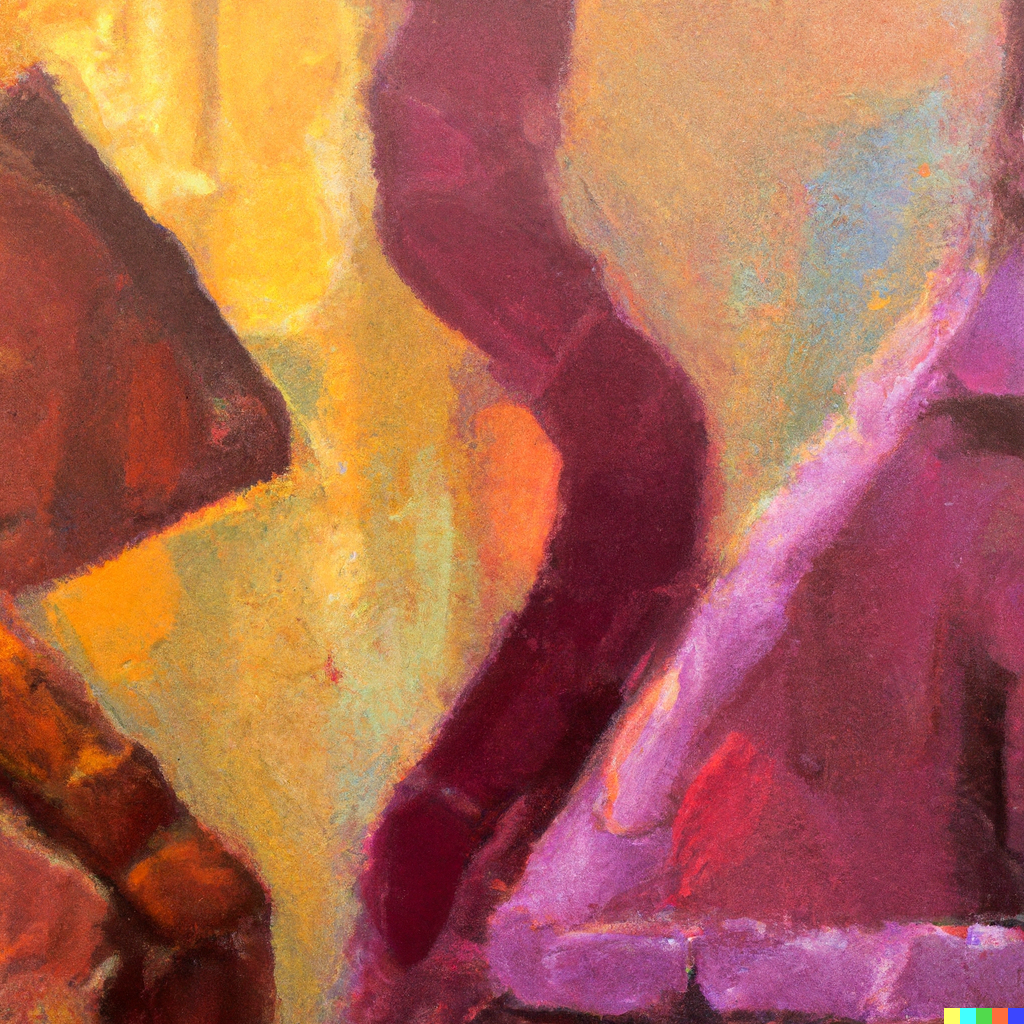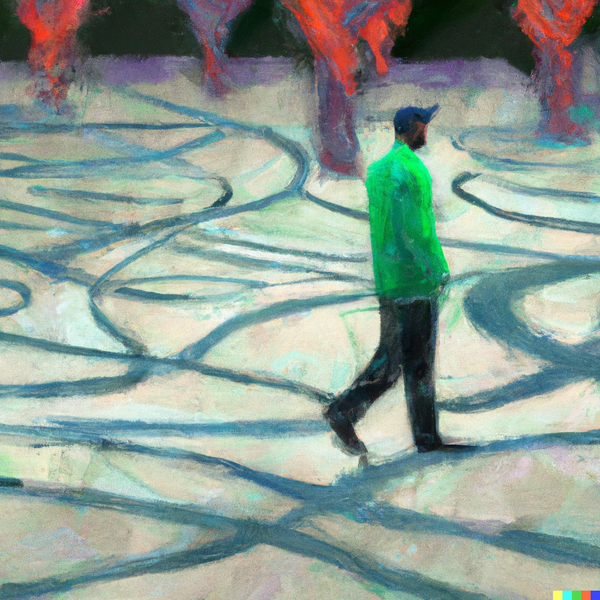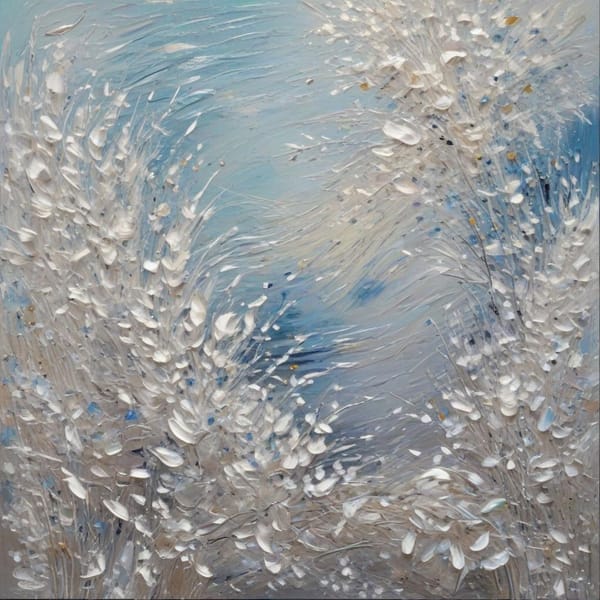the thread, the ray, and the note

Every thread is made up of even more delicate fibers. Every beam is composed of even sharper rays. And every melody holds within it even more evanescent notes, whose modesty affords for one a unit worthy of one’s adoration. It’s a system of microcosms of some sort, with each element often revealing a new limit in one’s willingness to maintain necessary interest in one’s environment – the wider scene one finds oneself in; or rather, one places oneself in. I speak here of, say, the student in a classroom, the bride in a wedding party, patient in a hospital, soldier on the battlefield, corpse in a grave – and whatever other instances of being we craft up for ourselves to make the goal of our existence appear attainable. And perhaps this goal – which no philosopher, scientist, artist, clergyman, or layman has been able to ascertain – is already conceivable, but that’s not the honey tree I wish to get stuck in today. I wish instead to consider the slippery realization that notes are worthy of arrangement, rays are befitting of alignment, and threads warrant plying.
The idea here is that whatever our world may be – in its inception, continuum, and conclusion – it is one governed, at the very least, by a myriad of potential harmonies and their antitheses. Surely, the argument has often been presented in the singular that there is such a *definite* thing as “order” and any other state outside of it is “chaos”, yet my stance is that there are multiple states of order and multiple states of chaos. Of course, this makes things a little complicated because, for one, how does one know, in a sea of fifty-fifties, if a given state is one of concordance or not, and two, are each side’s potentialities of equal value in their own camp? The latter statement questions whether or not, say, all potential paths to harmony bring about similarly-beneficial outcomes or if all roads to chaos-ville lead to equally-disillusioning destinations… again, in the pursuit of whatever our collective – or individual, really – bourne is. The assumption here is that order is good and chaos is bad. Well, can chaos be good? Absolutely. Chaos is the caterpillar to the butterfly that is order. A little bit of chaos is needed to have something to strive for, something to build, something to bring into existence, almost as an extension of ourselves. That still relies on the pre-assumption that order is good – and necessary. So, can order be bad? Without a doubt.
You must have heard it being told that too much of anything is harmful. This has less to do with the thing itself but rather its recipient. Fifty tablespoons of sugar in eight ounces of coffee is probably too sweet, but the same amount in a hundred gallons of coffee is virtually nothing. So the harm in the excessiveness of something comes from some limit in its container. In this way, I wonder whether our inability to hold too much chaos or too much order comes from some finite part of us that can only contain so much. Like a tree receiving too little or too much water dying, the same goes for us if we find ourselves approaching saturated zones of either chaos or order.
That written, if one finds oneself in a state of unadulterated order, one may need to consider making an acquaintance with chaos. This is effective in the case of psychopathologies like social anxiety disorders leading to complete isolation. While one may no longer experience heart palpitations, sweaty palms, and intrusive thoughts, one would be missing out on the chance to witness other humans’ adventures – most of which are worthy spectacles.
Perfection (absolute order or good) – a state none of us will ever have to worry about, by the way – could be detrimental also because there would be no more order to bring about from chaos. Yet this does not mean that we should seek the most chaos, so that there is more order to bring to life. Consider what happens as one approaches the limits of chaos. Just how “harmful” could “harmful” be? Does it become so harmful that it is good? Or is there no limit to chaos such that it will always be approaching some infinity-esque state of harmfulness? I use the suffix “-esque” here because it has recently come to my attention that the idea of “infinity” is built on shaky foundations. That there may not even be such a thing as “limitless”, “unending”, “inexhaustible” or whatever other terms we have come up with to deal with our innate desire for continuity.
My issue with this kind of thinking is not so much philosophical as it is linguistic. My argument is primarily based on the idea that it is uncommon – or rather, impossible – for humans to come up with terms for things that do not exist. For instance, there is no native term for “ice cream” in my parents’ vernacular languages, Kerewe and Jita, with the former being from an island tribe in Lake Victoria and the latter from the home of the Serengeti. Skeptics would argue that this is evidence for mental laziness or some lack of imagination, yet it is simply a matter of the function of language – to exchange information about what we encounter. To create language for an entity, it must have been encountered, wherever that may happen – in a school, wedding reception, clinical setting, warzone, funeral – or even in our mental world. Therefore, existence does not equate tangibility (obviously). And our minds have the *untamed* capacity to bring things into existence in our physical realities, first, in language and secondly, in the fruits of our words and symbols. And if this mental ability is yet to be fully exhausted, what is to be said of the potential of our physical world, with which we live our purpose? Limitless.
In both ways, of course.
If infinity exists for order, it must also exist for chaos. Like the parallel sides of a coin, both carry inexhaustible potential for good and harm, which is why it helps to distinguish between the two parties. Indeed one must distill their gasolines and kerosenes from their residuals and asphaltenes – and it is precisely in this form, by pushing the limits on how much “heat” one can handle. Like taking small incremental doses of poison until one is immune. Taking increasingly bigger risks until one accustoms oneself to the thrill of jumping off of cliffs and dancing with panthers in an amphitheater. Because one does not get to the Colosseum before the Ludi. And it is in the latter where one learns what one benefits from and what one endures adverse effects from. In the doing.
In this process, one uncovers the dullness in aiming for “a life well-lived”. This is often a cover-up for those among us aiming for a perfect life, one of maximal order and minimal chaos. A life interested in studying the most complex subjects, marrying the perfect spouse, steering clear of all malaise, conquering other peoples’ lands, becoming immortal.





